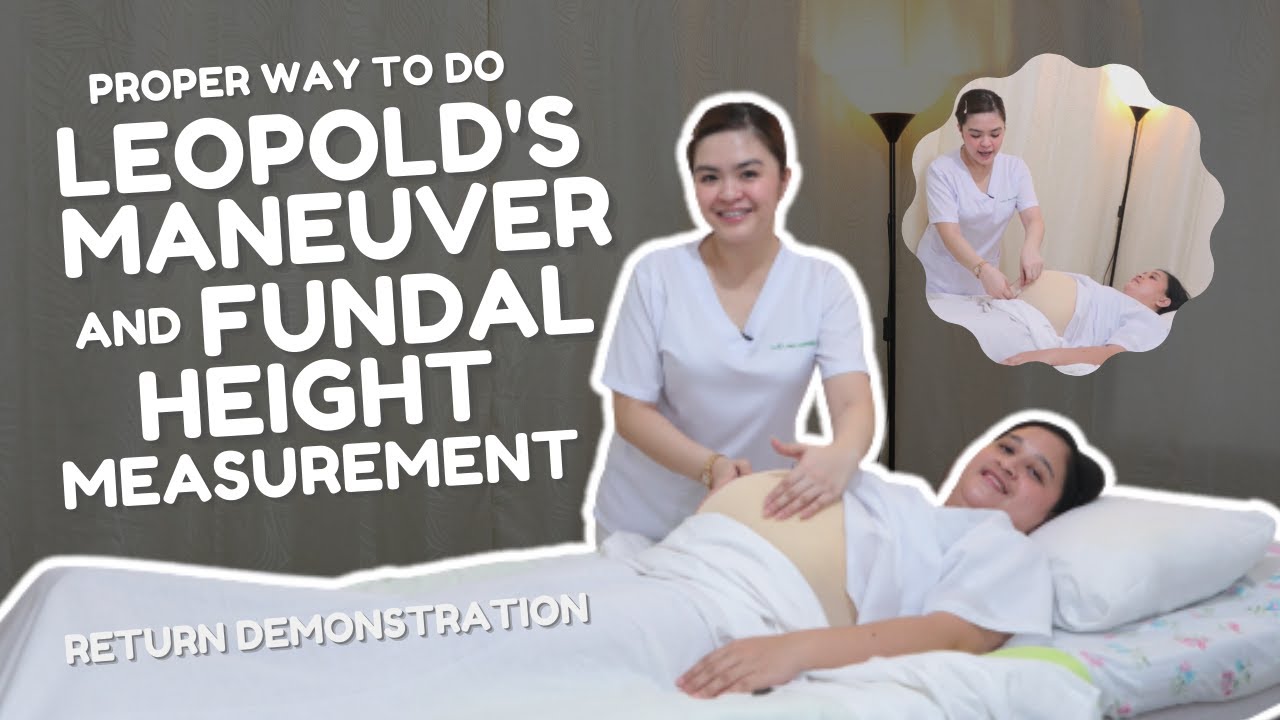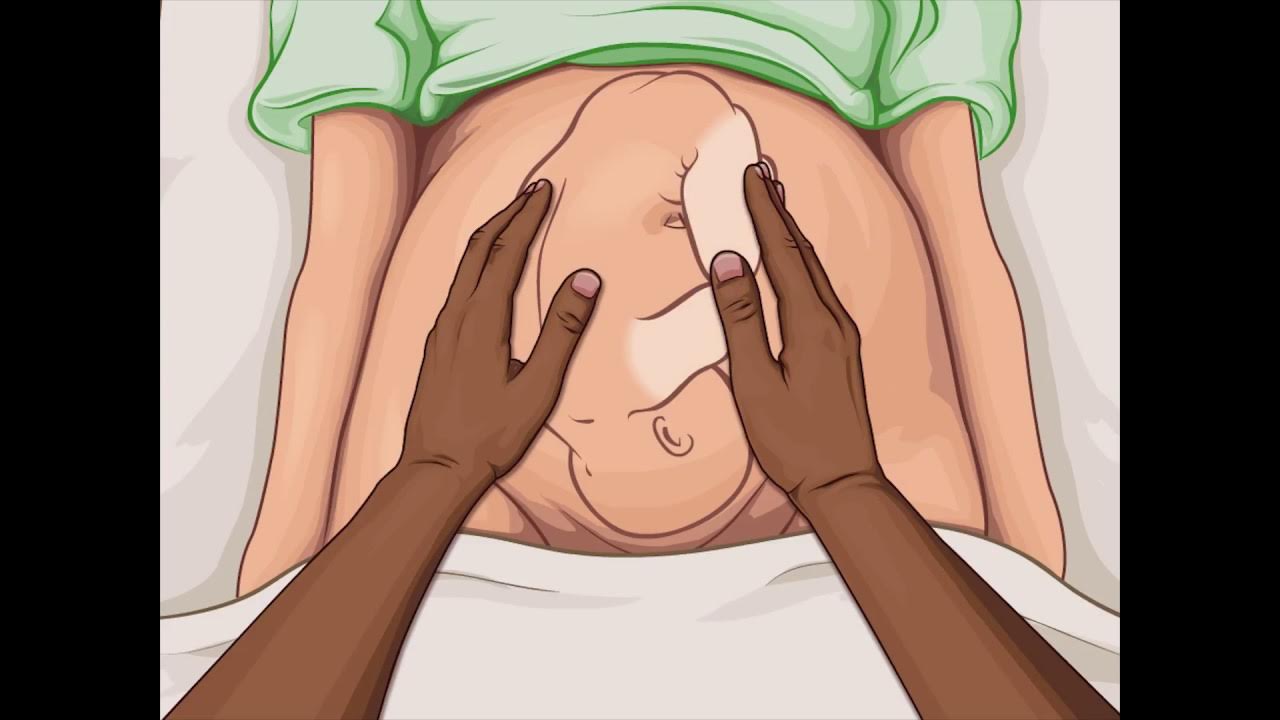PREFORMING LEOPOLD'S MANEUVERS | SKILLS DEMO
Summary
TLDRIn this educational video, Nursing Prep demonstrates Leopold's maneuvers, a technique to determine the position of a baby in the womb. The process begins with ensuring patient privacy and verifying identity. The patient is then prepared by emptying her bladder and lying flat. The four-step maneuver includes feeling the top of the uterus for the baby's head or bottom, locating the baby's back, checking if the head is engaged in the pelvis, and finally, verifying the baby's position from the feet. The video assures that this method is quick, easy, and safe for both mother and baby.
Takeaways
- 🧼 Start with proper hand hygiene and ensure patient privacy.
- 🔍 Verify the patient's identity using two identifiers: their name and date of birth.
- 🤰 Explain the procedure to the patient and get consent before starting Leopold's maneuvers.
- 👐 First maneuver: Locate the baby's head or bottom by feeling the top of the uterus.
- 👈 Second maneuver: Identify the baby's back by feeling the sides of the uterus.
- 👶 Third maneuver: Check if the baby's head is engaged by attempting to lift it near the symphysis pubis.
- 🔄 Fourth maneuver: Turn around to face the patient's feet and verify the baby's position by feeling from the bottom up.
- 📊 The back's position is crucial for placing the heart rate monitor for accurate readings.
- 🤰 Ensure the patient is in a slightly reclined position with a hip wedge to facilitate the maneuvers.
- 👩⚕️ Leopold's maneuvers are a quick, non-invasive way to determine the baby's position in the uterus.
Q & A
What is the purpose of Leopold's maneuvers?
-Leopold's maneuvers are used to determine the position of the baby in the mother's womb without using any equipment.
Why is it important to wash hands and ensure patient privacy before performing Leopold's maneuvers?
-Washing hands is important for hygiene and preventing infection, while ensuring patient privacy is a fundamental aspect of patient care and respect.
How does one verify the patient's identity before starting Leopold's maneuvers?
-The patient's identity is verified by checking their name and date of birth using identification bands or electronic records.
Why should the patient empty her bladder before Leopold's maneuvers?
-Emptying the bladder ensures that the uterus is not compressed, allowing for a more accurate assessment of the baby's position.
What is the first step in performing Leopold's maneuvers?
-The first step is to feel for either the baby's head or bottom at the top of the fundus, which helps determine the presentation of the baby.
What does the baby's head feel like during the first step of Leopold's maneuvers?
-The baby's head feels big, hard, and round during the first step of Leopold's maneuvers.
How can you determine the baby's back position during the second step of Leopold's maneuvers?
-The baby's back is felt as a flat and long area on either side of the mother's abdomen, and this is where the heart rate monitor should be placed for accurate readings.
What does the third step of Leopold's maneuvers involve?
-The third step involves checking if the baby's head is engaged in the pelvis by attempting to lift it near the symphysis pubis.
What does it mean if the baby's head cannot be lifted during the third step?
-If the baby's head cannot be lifted, it indicates that the baby is engaged in the pelvis.
What is the final step in Leopold's maneuvers?
-The final step is to turn around and feel from the bottom up to verify the positioning of the baby.
Why is the correct order of the steps important in Leopold's maneuvers?
-Following the correct order ensures a systematic and comprehensive assessment of the baby's position, which is crucial for accurate prenatal care.
Outlines

This section is available to paid users only. Please upgrade to access this part.
Upgrade NowMindmap

This section is available to paid users only. Please upgrade to access this part.
Upgrade NowKeywords

This section is available to paid users only. Please upgrade to access this part.
Upgrade NowHighlights

This section is available to paid users only. Please upgrade to access this part.
Upgrade NowTranscripts

This section is available to paid users only. Please upgrade to access this part.
Upgrade NowBrowse More Related Video

How to do Obstetric Examination? Leopold Maneuvers | Obs-Gyne Full Course Launched

Leopold's Maneuver | Return Demonstration

LEOPOLD'S MANEUVER AND FUNDAL HEIGHT MEASUREMENT l RETURN DEMONSTRATION (student nurse)

Pemeriksaan Fisik Ibu Hamil

Leopold's Maneuvers - Fundamentals of Fetal Health Surveillance

Video Learning: Pemeriksaan Fisik Ibu Hamil
5.0 / 5 (0 votes)